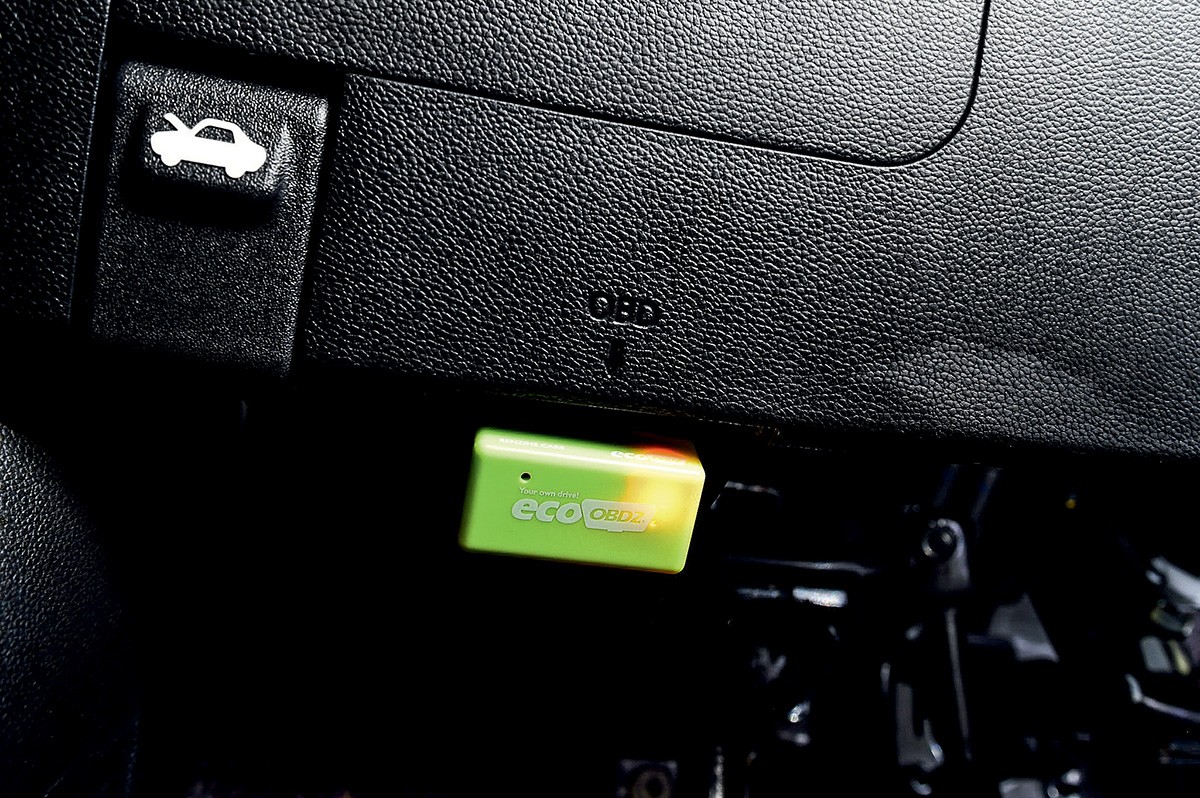Many fuel-saving devices are available online, all promising to increase your car’s MPG. However, a common issue with these gadgets is that their technical explanations are often confusing, vague, or simply lack any basis in automotive engineering. The Eco OBD2 device attempts to be different, at least in theory. This small device, measuring approximately 7 x 2 cm, is designed to be plugged into your car’s OBD2 port (present in cars manufactured from 1996 in the USA and 2010 in Brazil onwards). The claim is that by connecting to this port, the Eco OBD2 can modify your engine’s management system, optimizing it to reduce fuel consumption by up to 15%.
Developed for vehicles running on gasoline, ethanol, or flex-fuel, we decided to put the Eco OBD2 to the test using a Hyundai HB20 1.6 16V. Following the instructions provided (which were only in English), we proceeded with the installation.
Installing the Eco OBD2 Device
The installation process is straightforward. First, locate the OBD2 port in your car, which is usually found under the dashboard. With the car turned off, plug the Eco OBD2 device into this port. Next, insert your car key into the ignition and turn it to the first stage, just before starting the engine. Locate the reset button on the Eco OBD2 and press it for 5 seconds. The instructions then state to wait between 30 to 54 seconds, supposedly allowing the device to establish a connection with your car’s engine control unit (ECU). After this waiting period, start your engine. According to the manual, the installation is now complete.
However, before expecting any fuel savings, the manufacturer recommends driving for 200 km (approximately 124 miles). This mileage is supposedly needed for the device to adjust itself to your vehicle’s electronic control unit and optimize fuel consumption.
Testing the Eco OBD2 Fuel Saver
With the Eco OBD2 installed and after the recommended 200km break-in period, we took our Hyundai HB20, fueled with gasoline, to our test track in Limeira, SP, to measure fuel economy. With the Eco OBD2 connected, the HB20 achieved 11.2 km/l (26.3 MPG) in urban driving and 16.0 km/l (37.6 MPG) on the highway. To get a baseline, we then removed the Eco OBD2 and repeated the exact same fuel consumption tests under identical conditions. The results were… identical. Without the Eco OBD2, the Hyundai HB20 again registered 11.2 km/l in the city and 16.0 km/l on the highway.
Eco OBD2: Verdict
Despite its claims and easy installation, the Eco OBD2 device showed absolutely no improvement in fuel economy in our tests. Priced at an average of R$ 62.90 (approximately $12 USD) when purchased from online marketplaces, the Eco OBD2’s primary function in our test was simply to blink a light under the dashboard, indicating it was plugged in.
Eco OBD2 Evaluation
The Eco OBD2 device failed to deliver any reduction in fuel consumption.
Rating: 0 out of 5 stars
Average Price: R$ 62.90 (BRL) / ~$12.00 (USD)
Where to Buy: Online marketplaces
In conclusion, while the idea of a simple plug-and-play device that improves fuel economy is appealing, the Eco OBD2, based on our rigorous testing, does not live up to its promises. It’s essential to approach such aftermarket fuel-saving gadgets with skepticism and rely on proven methods for improving fuel efficiency, such as regular car maintenance and efficient driving habits.
